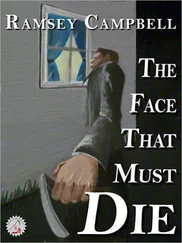Eric Nylund - All That Lives Must Die
Здесь есть возможность читать онлайн «Eric Nylund - All That Lives Must Die» весь текст электронной книги совершенно бесплатно (целиком полную версию без сокращений). В некоторых случаях можно слушать аудио, скачать через торрент в формате fb2 и присутствует краткое содержание. Год выпуска: 2010, Жанр: Фэнтези, на английском языке. Описание произведения, (предисловие) а так же отзывы посетителей доступны на портале библиотеки ЛибКат.
- Название:All That Lives Must Die
- Автор:
- Жанр:
- Год:2010
- ISBN:нет данных
- Рейтинг книги:5 / 5. Голосов: 1
-
Избранное:Добавить в избранное
- Отзывы:
-
Ваша оценка:
- 100
- 1
- 2
- 3
- 4
- 5
All That Lives Must Die: краткое содержание, описание и аннотация
Предлагаем к чтению аннотацию, описание, краткое содержание или предисловие (зависит от того, что написал сам автор книги «All That Lives Must Die»). Если вы не нашли необходимую информацию о книге — напишите в комментариях, мы постараемся отыскать её.
All That Lives Must Die — читать онлайн бесплатно полную книгу (весь текст) целиком
Ниже представлен текст книги, разбитый по страницам. Система сохранения места последней прочитанной страницы, позволяет с удобством читать онлайн бесплатно книгу «All That Lives Must Die», без необходимости каждый раз заново искать на чём Вы остановились. Поставьте закладку, и сможете в любой момент перейти на страницу, на которой закончили чтение.
Интервал:
Закладка:
36
In 1852, the war between the London Confederation of the Unliving (a loose alliance of undead factions) and mortal magical families (Covington, Gower, and Van Wyck) halted after three hundred years. The League of Immortals brokered an armistice for the living to retain possession of their Earthly realm. The Confederation of the Unliving were given dominion over the London Warrens and the adjacent Gloom Lands. Earth, while open to visitation and even residency, remains off-limits for predation by the undead. Although breaches do occur, the Confederation maintains an internal enforcement division to police offenders. Gods of the First and Twenty-first Century, Volume 7, Those That Live Not. Zypheron Press Ltd., Eighth Edition.
37
Although many variations of the “Alphabet of the Angels” appear in medieval grimoires, perhaps most notably in the infamous Beezle edition Mythica Improbiba (Taylor Institution Library Rare Book collection, Oxford University), none have authentically been deciphered. Those that claimed to have were all denounced later as fakes. Catholic Church officials claim that one must be blessed, i.e., be a saint or of angelic origin, to read the script. Golden’s Guide to Extraordinary Books, Victor Golden, 1958, Oxford.
38
Holy Bible, King James translation, 1 Peter 5:8. -Editor.
39
At the Battle of Waterloo, the field was muddy, and recoil caused cannon to bury themselves after repeated firing. One British squad known as the “Roaring Devils” remained to prevent French infantry from advancing, firing, according to legend, until three cannoneer teams perished, drowning in the mud. They were never found, but occasionally over the years, cannoneers in muddy uniforms are seen wandering under full moonlight-firing artillery at unseen foes. Gods of the First and Twenty-first Century, Volume 6, Modern Myths. Zypheron Press Ltd., Eighth Edition.
40
Black cats have historically been associated with witchcraft, luck (both good and bad) and/or evil, and hundreds of other superstitions. A black cat crossing one’s path is almost universally considered bad luck, however. Black cats were also believed to be shape-shifters-witches transformed, traveling incognito, and doing evil. Gods of the First and Twenty-first Century, Volume 5, Core Myths (Part 2). Zypheron Press Ltd., Eighth Edition.
41
“The Night Train,” translated from German. -Editor.
42
Although translocation (aka teleportation: an object moving instantaneously across a distance while not crossing the intervening space) has been attempted and pretended by mystics and stage magicians for millennia, there are no documented accounts of the phenomenon ever occurring among mortals. The infamous Dr. Faustus (Johan Georg Faust) did appear in two places at once, but it is hypothesized that he was cloned or doubled (with the aid of his Infernal sponsor, Mephistopheles) and did not translocate. The ability is also unknown among Immortals (although some have mastered the trick of bending space to travel across the world in astonishingly short times). True and instantaneous translocation, as yet, seems to be the sole purview of select gifted Infernal clans. Gods of the First and Twenty-first Century, Volume 13, Infernal Forces. Zypheron Press Ltd., Eighth Edition.
43
Flocks of creatures are often designated by a special words, e.g., a “murder” of crows or a “pod” of whales. Groups of Infernals (fallen angels) are called an “exodus” of angels (or Infernals). Although this grammatical designation has entered the vernacular, it remains controversial and contested by the Catholic Church for two reasons: first, Infernals almost never group (making the term largely hypothetical); and second, it suggests that the “fallen” angels’ exit from Heaven may not have been the result of an expulsion after losing a war, but instead, a voluntary departure. -Editor.
44
Divum sub Terra (Latin for “Sky under Earth”) transcribed from scrolls (ca. 500 B.C.E.) and spirited away from the Library of Alexandra, lost, and then rediscovered in the walls of a Benedictine monastery and translated by Sir Eustace De Vires. The book details the sacrificial rites and prayers of the popular cult of Zeus prominent throughout classical society (Zeus Olympios) as well as the more secretive forms driven into hiding, but which survived well beyond the advent of the Christian era. One such cult was dedicated to the “underground” Zeus (Zeus Katachthonios) where the deity is often represented as snakes and a man intertwined. The book was ordered destroyed by Papal authority, but two copies survived the 1677 Great Burning in Wittenberg, and found their way to such collectors as Oliver Cromwell, Napoléon Bonaparte, and Charles de Galle, who have praised it for its insights into the philosophies of leadership. Golden’s Guide to Extraordinary Books, Victor Golden, 1958, Oxford.
45
Salt appears in many world religions as a bane to evil. Since ancient times, bowls of salt were placed by the door to keep the devil at bay (until he had counted every grain). It is used in contemporary religious rites such as the Traditional Latin Mass, exorcisms, and in the Shinto purification rituals of sumo wrestling rings prior to a match. The substance’s effectiveness has diminished since ancient times (if it ever existed). In Infernal parlances, the use of salt, especially when relating to business, is considered a grave insult because it infers that the insulted Infernal is so weak as to be affected by such a common substance. Gods of the First and Twenty-first Century, Volume 13, Infernal Forces. Zypheron Press Ltd., Eighth Edition.
46
Genevieve Stephenson-Hines, one of the longer-lived of the Stephenson clan, retired from the practice of white magic at the age of 106. Whereabouts unknown, but no record of her death exists, so she may still be alive. -Editor.
47
The mythohistorical origins of fairies remain inconclusive, although there are many theories: the dead, angels (demoted or otherwise), elemental forces, transformed mortals, baby’s laughs, or pagan gods. Supposedly fairies live in a realm severed from the remote nether realms, borderlands, and purgatories. To travel to, and more notably back from , their realm is fraught with danger even by nether realm standards. Journey is never by happenstance, and beings only rarely depart by special permission (e.g., the Faery Queen’s Silver Bough, which must be held at all times to avoid the glamours and charms of her realm and subjects). A Primer on the Middle Realms , Paxington Institute Press, LLC
48
“When I trod to Avalon not did man come back anon. ’Tis not me now writing this. / My soul lost, a’ wander bliss.” Mythica Improbiba (translated version), Father Sildas Pious. ca. thirteenth century.
49
“Muses to laugh, to leap, to lament, to perish, and to be born anew.” Translated from Latin. -Editor.
50
Rhonchial means “pertaining to snoring,” and musicaster is a mediocre musician, so in this context “one who’s moderate musical talents sounds like snoring.” — Editor.
51
“Twinkle, Twinkle, Little Star” was first published as “The Star” by Jane Taylor in 1806. It is sung to the French melody “Ah! vous dirai-je, Maman.” The older French lyrics (among many variations) are translated here as: “Ah! I shall tell you, Mum, What causes my torment. Papa wants me to reason Like an adult I say that candy Is better than being right.”em> Perhaps closest to the original source is this couplet from the obscure Benedictine Hymn scroll, Obsequium Angelus, authored by Father Sildas Pious ca. thirteenth century: “ ’Ware young child the Morning Star. Look away and you’ll go far. Like a jewel ablaze in dark, fallen angel casting spark. ’Ware the dark and ’ware the light. Naught but trust in God at night.” Origins of Art and Power in Musicem>, Erin DuPreé, M.F.A, Ph.D., Paxington Institute Press, LLC.
Читать дальшеИнтервал:
Закладка:
Похожие книги на «All That Lives Must Die»
Представляем Вашему вниманию похожие книги на «All That Lives Must Die» списком для выбора. Мы отобрали схожую по названию и смыслу литературу в надежде предоставить читателям больше вариантов отыскать новые, интересные, ещё непрочитанные произведения.
Обсуждение, отзывы о книге «All That Lives Must Die» и просто собственные мнения читателей. Оставьте ваши комментарии, напишите, что Вы думаете о произведении, его смысле или главных героях. Укажите что конкретно понравилось, а что нет, и почему Вы так считаете.












